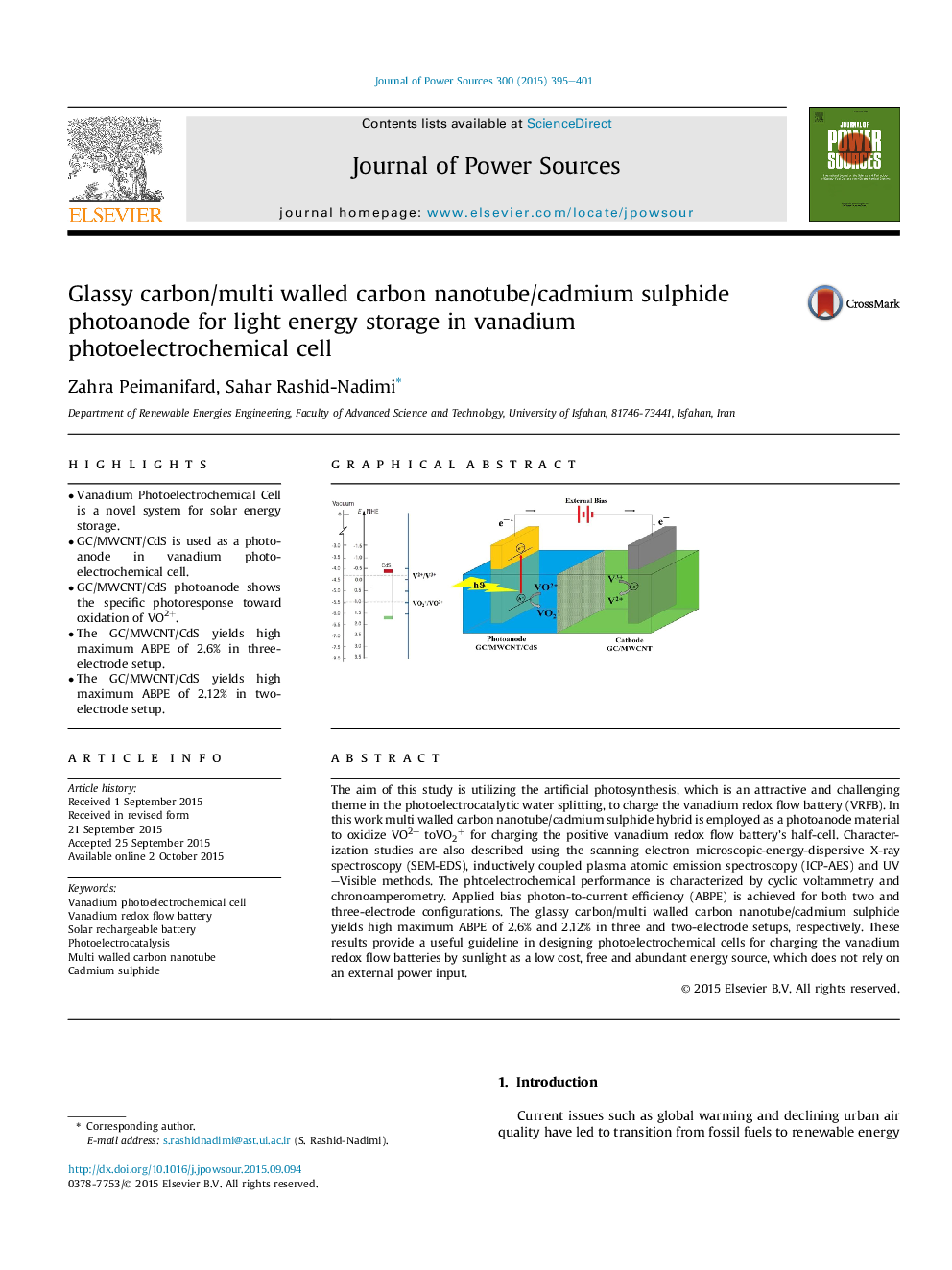| Article ID | Journal | Published Year | Pages | File Type |
|---|---|---|---|---|
| 1285824 | Journal of Power Sources | 2015 | 7 Pages |
•Vanadium Photoelectrochemical Cell is a novel system for solar energy storage.•GC/MWCNT/CdS is used as a photoanode in vanadium photoelectrochemical cell.•GC/MWCNT/CdS photoanode shows the specific photoresponse toward oxidation of VO2+.•The GC/MWCNT/CdS yields high maximum ABPE of 2.6% in three-electrode setup.•The GC/MWCNT/CdS yields high maximum ABPE of 2.12% in two-electrode setup.
The aim of this study is utilizing the artificial photosynthesis, which is an attractive and challenging theme in the photoelectrocatalytic water splitting, to charge the vanadium redox flow battery (VRFB). In this work multi walled carbon nanotube/cadmium sulphide hybrid is employed as a photoanode material to oxidize VO2+ toVO2+VO2+ for charging the positive vanadium redox flow battery’s half-cell. Characterization studies are also described using the scanning electron microscopic-energy-dispersive X-ray spectroscopy (SEM-EDS), inductively coupled plasma atomic emission spectroscopy (ICP-AES) and UV–Visible methods. The phtoelectrochemical performance is characterized by cyclic voltammetry and chronoamperometry. Applied bias photon-to-current efficiency (ABPE) is achieved for both two and three-electrode configurations. The glassy carbon/multi walled carbon nanotube/cadmium sulphide yields high maximum ABPE of 2.6% and 2.12% in three and two-electrode setups, respectively. These results provide a useful guideline in designing photoelectrochemical cells for charging the vanadium redox flow batteries by sunlight as a low cost, free and abundant energy source, which does not rely on an external power input.
Graphical abstractFigure optionsDownload full-size imageDownload as PowerPoint slide
